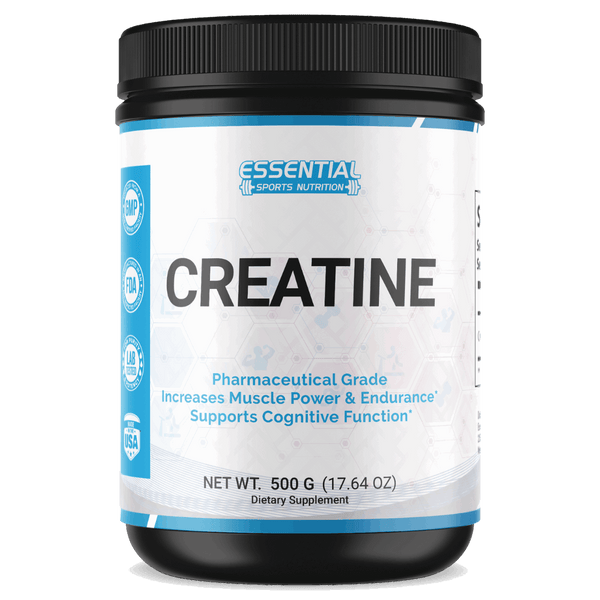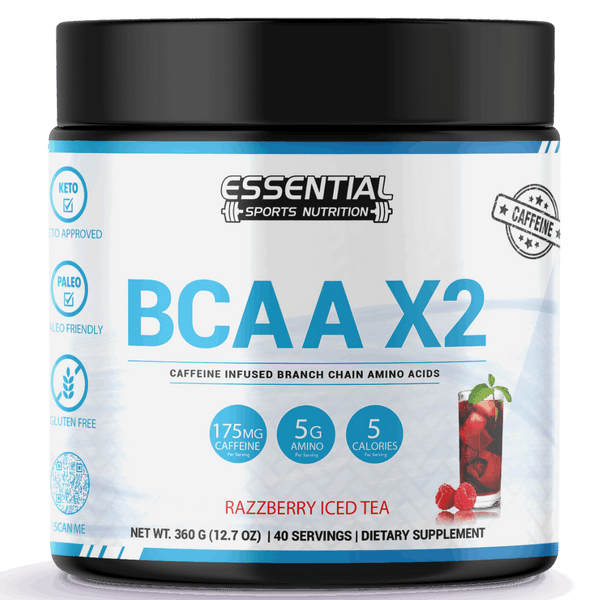Benefits of the Sumo Deadlift: Proper Form, Muscles Worked, & Variations
To perform a Sumo deadlift correctly, position your feet wider than shoulder-width with toes pointing out. Keep a neutral spine and push through your heels for hip and knee extension. This movement engages key lower body muscles like glutes, hamstrings, and adductors more intensely. Vary your stance width for different muscle activation levels. Adjust your grip for stability and strength gains. Focus on ideal sets and reps for strength development, considering rest intervals. Comparing to conventional deadlifts, Sumo deadlifts stress the lower back less and emphasize quadriceps. Mastering proper form and exploring variations can enhance your workout.

Key Takeaways
- Sumo Deadlift targets lower body muscles with wider stance and hip abduction.
- Enhances strength, mobility, and grip stability while engaging key muscle groups.
- Variations cater to individual biomechanics, grip strength, and muscle activation.
- Proper form includes wide stance, neutral spine, and driving through heels.
- Benefits include muscle mass development, improved hip mobility, and core stability.
Benefits of Sumo Deadlift
The Sumo Deadlift offers a range of benefits, targeting key muscle groups in the lower body and enhancing overall strength and mobility. By engaging the glutes, hamstrings, quads, and lower back effectively, this exercise helps build strength, power, and muscle mass in the lower body. The wide stance of the Sumo Deadlift also contributes to improving hip mobility and overall athleticism. Additionally, the unique setup of the Sumo Deadlift enhances grip strength and core stability due to the wider hand placement and foot positioning.
One significant advantage of incorporating the Sumo Deadlift into your workout routine is its ability to help break through deadlift plateaus and improve overall lifting performance. The Sumo Deadlift places less stress on the lower back compared to the conventional deadlift, making it a valuable variation for individuals looking to strengthen their lower body while minimizing the risk of injury. By mastering the Sumo Deadlift and reaping its benefits, you can take your strength training to the next level and achieve greater muscular development and functional strength.
Proper Sumo Deadlift Form
To execute a proper Sumo Deadlift form, ensure your feet are positioned wider than shoulder-width and angled outward, maintaining a neutral spine throughout the movement. Here are three key points to keep in mind:
Foot Positioning: Stand with your feet wider than your shoulders and your toes pointed out at an angle. This wide stance helps reduce the distance the bar has to travel, allowing for a more efficient lift.
Spine Alignment: Keep your back straight and maintain a neutral spine from the start to the end of the lift. This posture protects your lower back and ensures correct alignment for peak biomechanics.
Hip and Knee Extension: Drive through your heels as you lift the weight, fully extending your hips and knees at the top of the movement. This action effectively engages the glutes and hamstrings, maximizing the benefits of the Sumo Deadlift.
Muscle Engagement in Sumo Deadlift
Engage key muscle groups effectively by focusing on proper form and alignment during your Sumo Deadlift. This exercise targets various muscle groups, including the glutes, hamstrings, quadriceps, lower back, and adductors. By emphasizing hip extension and abduction, you engage multiple lower body muscles simultaneously. The wide stance in sumo deadlifts specifically increases activation in the inner thigh muscles (adductors) due to the increased abduction of the hips.
To better understand the muscle engagement in Sumo Deadlifts, refer to the table below:
| Muscle Group | Primary Action | Secondary Action |
|---|---|---|
| Glutes | Hip Extension | Hip Abduction |
| Hamstrings | Knee Flexion | Hip Extension |
| Quadriceps | Knee Extension | Hip Flexion |
Variations of Sumo Deadlift
When exploring variations of the sumo deadlift, it's important to consider the stance width options and grip variations. Stance width can greatly impact muscle recruitment and joint angles during the lift. Experimenting with different grips can change the emphasis on specific muscle groups and provide a tailored approach to your training.
Stance Width Options
For peak performance and muscle engagement during sumo deadlifts, varying your stance width is crucial. Here are some key points to take into account when selecting your stance width:
Impact on Muscle Activation: The width of your stance influences how much your glutes and adductors are engaged during the lift. Experiment with different widths to target specific muscle groups effectively.
Range of Motion: Stance width can affect your range of motion in the lift. A wider stance may reduce the distance the bar travels, potentially impacting your overall performance.
Individual Biomechanics: Adjusting your stance width allows you to customize the lift to your body's unique mechanics, optimizing power output and reducing the risk of injury.
Grip Variations
Exploring different grip variations is crucial for maximizing your performance and targeting specific muscle groups during the sumo deadlift exercise. The double overhand grip is key for improving grip strength and forearm development. Opting for a mixed grip can prevent the bar from rolling, providing added stability during the lift. The hook grip, which involves wrapping your fingers around your thumb, ensures a secure hold on the barbell. If grip fatigue becomes an issue, using straps can help maintain your grip and allow you to focus on lifting heavier weights. Each grip variation serves a distinct purpose, so it's important to experiment and find the one that best fits your needs and goals in your sumo deadlift training.
Sumo Deadlift Safety Tips

When performing Sumo Deadlifts, ensure your foot positioning is wide to create stability and support during the lift. Remember to align your hips properly to maximize power output and reduce the risk of injury. Following these tips will help you maintain a safe and effective Sumo Deadlift technique.
Foot Positioning Tips
To ensure proper form and reduce the risk of injury in the sumo deadlift, meticulous attention to foot positioning is essential. Here are three essential foot positioning tips for a successful sumo deadlift:
- Wide Stance: Position your feet wider than shoulder-width apart to engage the adductor muscles and create a stable foundation for lifting.
- Toes Outward: Point your toes slightly outward to enhance external hip rotation, align the hips correctly, and maximize muscle engagement during the lift.
- Efficient Force Transfer: Effective foot placement allows for a more efficient transfer of force from your legs to the barbell, improving performance and decreasing the likelihood of injury.
Mastering correct foot positioning is vital for maintaining balance, stability, and power throughout the sumo deadlift movement.
Hip Alignment Importance
Maintaining proper alignment of your hips is a critical aspect of upholding safety and maximizing effectiveness in the sumo deadlift technique. Correct hip alignment is crucial to preventing lower back strain and injury. When your hips are aligned correctly, you can generate more power and activate the necessary muscles efficiently. To achieve ideal engagement of the glutes, hamstrings, and adductors, your hips should stay in line with your feet and shoulders throughout the entire sumo deadlift movement. By focusing on hip alignment, you guarantee that the load is evenly distributed, reducing the likelihood of compensatory movements that can lead to imbalances or potential injuries. Pay close attention to your hip alignment to enhance your performance and keep yourself safe while performing the sumo deadlift.
Common Sumo Deadlift Mistakes
Avoiding these common mistakes is crucial for optimizing your performance and safety during the sumo deadlift.
Caving in the chest: Allowing your chest to collapse forward can disrupt proper hip alignment, leading to decreased power output. Focus on keeping your chest up and open throughout the lift to maintain a strong posture.
Rounding the back: A rounded back not only increases the risk of lower back injuries but also hinders the effectiveness of the lift. Ensure your back stays flat and neutral to protect your spine and maximize strength.
Incorrect knee positioning: Allowing your knees to cave inward places excessive strain on the knee joints and compromises overall stability. Keep your knees aligned with your toes and engage your glutes and hips to prevent inward collapsing.
Sumo Deadlift for Different Athletes

Have you ever wondered how the sumo deadlift can cater to the specific needs of different athletes based on their body mechanics and strengths? Sumo deadlifts are particularly beneficial for athletes with longer torsos relative to their height. This stance can help target different muscle groups compared to conventional deadlifts, making it a valuable variation in strength training programs. Some athletes may find sumo deadlifts more comfortable and effective due to their body mechanics, allowing for a more natural and efficient movement pattern.
It is essential for athletes to experiment with both sumo and conventional deadlift techniques to determine which one suits them best. Understanding individual strength levels and comfort with each variation can guide athletes in choosing the most suitable technique for their specific needs. By considering factors such as torso length, leg strength, and hip mobility, athletes can optimize their deadlift performance and minimize the risk of injury. Ultimately, incorporating sumo deadlifts into training routines can offer a unique challenge and help athletes achieve their strength and fitness goals more effectively.
Sets and Reps for Sumo Deadlift
When determining sets and reps for your sumo deadlift, focus on the ideal rep range, ensuring you're challenging yourself without sacrificing form. Remember to consider the rest between sets, allowing adequate recovery for peak performance. Utilize progression strategies to gradually increase weight as your strength and technique improve, keeping the workout challenging and effective.
Optimal Rep Range
For peak performance in sumo deadlifts, the ideal rep range typically involves 3-5 sets comprising of 3-5 repetitions each to focus on building strength effectively. When planning your sumo deadlift workout, keep these key points in mind:
Strength Building: Aim for 3-5 sets of 3-5 reps with a weight that challenges you but allows for proper form to enhance your strength effectively.
Muscle Gain: To increase muscle mass, consider performing 2-4 sets of 5-8 reps using moderate weight to induce hypertrophy in the targeted muscle groups.
Technique Development: If focusing on technique and form, practice with 4-6 sets of 2-4 reps using lighter weights to perfect your movement patterns and avoid injury.
Rest Between Sets
To enhance your training performance and recovery in sumo deadlifts, maintaining an appropriate rest period of 2-5 minutes between sets is vital for ensuring adequate recovery and sustaining your lifting capacity. When lifting heavier weights, longer rest periods may be necessary to maintain performance levels. Conversely, if focusing on endurance with lighter weights, shorter rest periods can be utilized. Sufficient rest between sets helps prevent fatigue and allows for peak performance during each set. It's important to listen to your body and adjust rest times as needed to maximize strength and muscle gains. Remember, the goal is to strike a balance between giving your body ample time to recover and pushing yourself enough to see progress in your sumo deadlift training.
Progression Strategies
You should progressively increase the challenge in your sumo deadlift sets by adjusting the number of reps and sets based on your fitness goals and experience level.
- For strength: Aim for 3-5 sets of 5 reps with challenging weights in the sumo deadlift progression to build strength effectively.
- For endurance: Target 3 sets of 12-15 reps with moderate weights in your sumo deadlift routine to enhance endurance capacity.
- Gradual load increase: Continually challenge your muscles by gradually increasing the load in your sumo deadlift sets, ensuring consistent progress and development. Adjusting the number of sets and reps based on your fitness goals and experience level in sumo deadlift training will optimize your performance and results.
Sumo Deadlift Vs. Conventional Deadlift
Comparing the Sumo deadlift to the Conventional deadlift reveals key differences in muscle engagement and stress distribution. Sumo deadlifts, with their wider stance, place less stress on the lower back compared to conventional deadlifts. The wider stance in the Sumo deadlift also emphasizes quadriceps activation over lower back engagement when compared to the more hip-dominant conventional deadlift. Additionally, the back angle in Sumo deadlifts tends to be more upright than in the conventional variation.
While both sumo and conventional deadlifts engage similar muscle groups, such as the hamstrings, glutes, and erector spinae, they do so with slight differences in emphasis. Experimenting with both styles can be beneficial, as it allows individuals to determine which technique suits their strengths and comfort levels best. Some may find that they are able to lift heavier weights more comfortably with one style over the other. Ultimately, the choice between Sumo and Conventional deadlifts depends on individual biomechanics and training goals.
Sumo Deadlift for Strength Development
When aiming to enhance strength development through sumo deadlifts, focus on targeting the posterior chain, including the lower back, glutes, and hamstrings. To maximize the effectiveness of sumo deadlifts for strength gains, follow these key principles:
Emphasize the Hip Hinge Movement: By focusing on the hip hinge movement during the sumo deadlift, you engage the core muscles to build strength and stability throughout the movement. This enhances your ability to lift heavier weights and reduces the risk of injury by promoting proper form and technique.
Optimize Stance and Toe Position: With a wide stance and toes pointed slightly outward, sumo deadlifts reduce the distance the hips have to travel during the lift. This positioning helps target the hamstrings more effectively and places less stress on the lower back, allowing for greater strength development over time.
Progressive Overload: Performing 3-5 sets of 5 reps with progressively increasing weight loads is an effective way to stimulate strength gains with sumo deadlifts. Incrementally challenging your muscles with heavier weights ensures continuous progress and adaptation, leading to increased overall strength, power, and muscle mass development.
Conclusion

Now that you have learned the proper form, benefits, and variations of the sumo deadlift, it's time to put your knowledge into practice. Remember to focus on engaging your muscles, maintaining proper alignment, and gradually increasing weight to see improvements in strength and overall fitness. Don't be afraid to experiment with different variations to keep your workouts challenging and effective. Stay dedicated and consistent in your training to achieve your goals.
Proper Technique and Benefits of the Sumo Deadlifts FAQs
Q: What muscles are worked during sumo deadlifts?
A: Sumo deadlifts primarily work your glutes, hamstrings, quadriceps, lower back, and adductor muscles. The wider stance and toes-out position engage different muscle groups compared to conventional deadlifts, making it an effective exercise for lower body strength.
Q: What is the proper technique for sumo deadlifts?
A: To perform sumo deadlifts properly, start with a wide stance, grip the barbell with hands inside the legs, keep the back straight, and push through the heels while lifting the weight.
Q: What are the benefits of sumo deadlifts over conventional deadlifts?
A: Sumo deadlifts emphasize the inner thigh and lower body muscles more than conventional deadlifts, which focus on the back muscles.
Q: What are some variations of the sumo deadlift?
A: Variations of sumo deadlifts include sumo deadlifts with dumbbells, Romanian deadlifts, and sumo deadlifts with a shorter range of motion.
Q: Which muscles are specifically worked in the sumo deadlift with dumbbells?
A: The sumo deadlift with dumbbells targets the glutes, quads, hamstrings, lower back, and inner thigh muscles due to the wide sumo stance and use of dumbbells.
Q: How does the sumo deadlift differ from the conventional deadlift?
A: The sumo deadlift has a wider stance, hands placed inside the legs, and emphasizes the lower body muscles, while the conventional deadlift has a narrower stance and works more on the back muscles.
Q: What are the unique benefits of incorporating sumo deadlifts into a workout routine?
A: Sumo deadlifts help target specific muscles like the inner thighs, improve hip mobility, and allow lifters to lift heavy weights with perfect form by effectively hinging at the hips.
Q: What Are the Benefits of the Sumo Deadlift?
A: When you ask about the benefits of the sumo deadlift, you're looking to effectively target multiple muscles, reduce strain on your lower back, improve overall strength, and enhance your grip power for lifting activities.
Q: How to Properly Do Sumo Deadlift?
A: Start with a wide stance and toes out to properly do a sumo deadlift. Keep the weight close, drive through heels, and maintain a neutral spine. Practice with lighter weights first for safety; mastering form is essential for success.
Q: Is Sumo Deadlift a Variation?
A: Yes, sumo deadlift is indeed a variation of the traditional deadlift. It involves a wider stance and toes pointed outward. This variation targets different muscle groups, emphasizing the quadriceps and adductor muscles.























